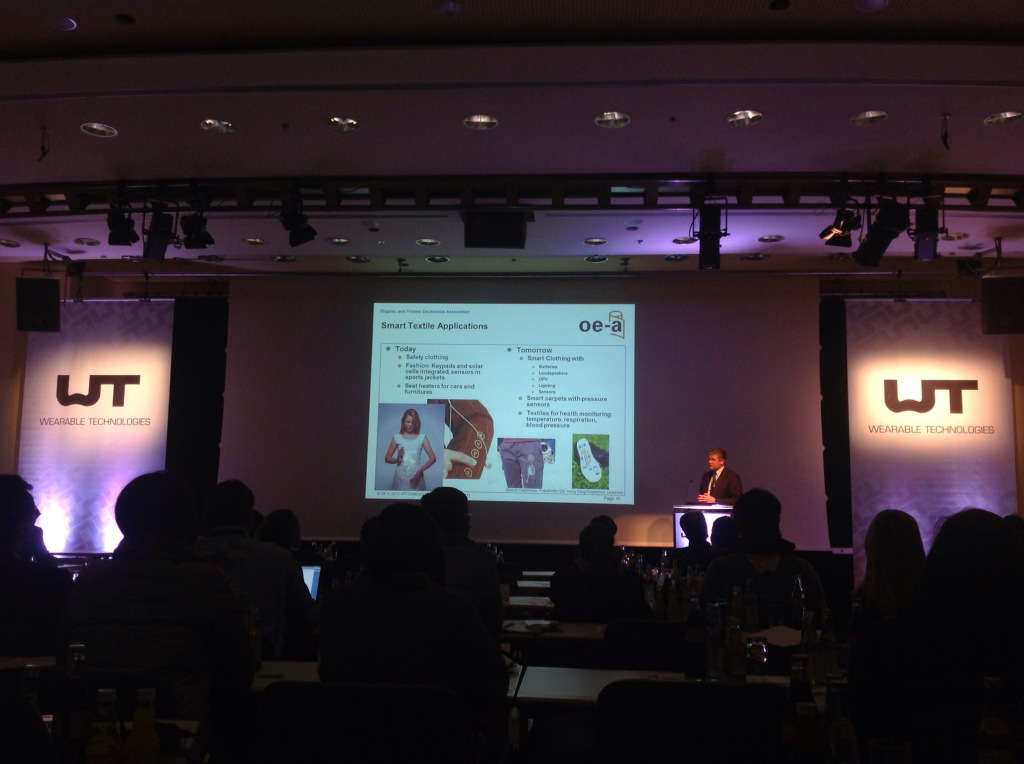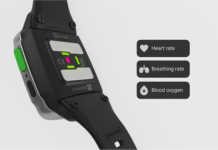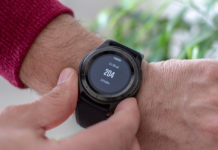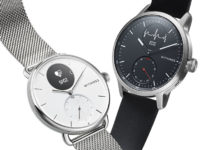On the 4th of February, the annual Wearable Technologies Europe Conference took place in Munich. Christian Stammel, CEO of the Wearable Technologies Corporation, opened with a keynote address and gave an overview of the wearable –tech markets of the future. According to projections, an enormous economic potential with an average annual growth rate of 37% was developing particularly in the sectors of healthcare and entertainment. The key factors Stammel identified were the success of the up-and-coming Bluetooth Smart transmission standard, which, due to new, cost-efficient chips, would soon be available in all modern smartphones. In addition, the economic expert also considered the emergence of new product categories such as the very well-received smartwatches as evidence for consumers’ willingness to integrate new wearable-tech solutions into their daily lives.
Great advances in sports and health management
Following Stammel’s keynote, the fitness panel began with companies such as Finis, Impire and Fitbit. Christian Holzer’s description of the soccer-data specialist Impire was particularly interesting – how the soccer-tracking solutions of his business were optimized to meet the varying requirements of playing in the field, professional training and amateur athletes. Thus, for professional league games, Impire offers the service of tactical information based on its picture recognition systems, so that the trainers are not additionally distracted during the hectic course of the game. For professional training, on the other hand, Impire offers sensors for the players, which can register precise information about the activity and routes of the athletes via a combination of GPS, acceleration measurement and correction calculation based on the data of all measured players. In contrast, Impire’s solution for amateur players does without the GPS, in order to keep the operation simple, which is important for the target market, and battery lifetime long while maintaining an adequate price. With this comparison, Holzer made clear how widely demands for tracking solutions can vary within just one sport, and that optimal solutions can only be generated with adjustments made to fit the needs of each respective target group.
The contributions from the representatives of Fitbit and Withings were also enlightening. Gareth Jones talked about Fitbit’s experience with the application of its products to corporate health management. Based on his accounts, in first tests with companies such as Coca Cola, up to 75% of the employees had decided to use the health-trackers offered by their employer and had increased their daily movement activity by an average of 43%. The resulting improved health of the employees, according to Garret, led to a reduction of health-related absence, making the use of Fitbit’s system one of the most cost-effective measures in corporate health management. Cédric Hutchings of Fitbit’s competitor Withings introduced the French companies’ new activity-tracker and new body-scale at the WT conference. With the pulse monitor, which is integrated into both new devices, Withings has enriched its health platform with a further vitality parameter that is greatly important for health and the early detection of diseases.
Future Tech and Augmented Reality at the Wearable Technology Conference
Innovative concepts along with market leaders showing their newest solutions were also represented in the section of Augmented Reality. At the beginning of the panel, Gilles Bailey presented his concept ShoeSense, an optic interface for gesture control that can be integrated into a shoe. Similar to Microsoft Kinect, which was used in prototypes of the system, the user’s input is registered with cameras in their shoes, rendering the use of other interface devices redundant and enabling entries in any stance, for example under a table.

David Lock from Vuzix presented a prototype of MX100, which – similar to Google Glasses – offers information in the peripheral view of the user. Lock described the device, which is expected to be available this year, as the beginning of a new computer paradigm. In the future, transparent displays integrated into glasses could enable an augmentation of reality at any time, and the smartphones that are so popular today could become part of the glasses. Tom Fowler of Recon Instruments, producer of the popular Heads-Up displays for skiing and snowboarding glasses described how he imagined the future of augmentation – the supplementary information offered should be presented in a way that is context-relevant, unobtrusive and correspondent to the user’s expectations, and in particular should support activities in the real world. That’s why future solutions by Recon Instruments will be optimized particularly to meet the demands of various sports as well as professions, such as surgeons.
Wearable Technologies Innovation World Cup
The conference came to a close with the presentation of the finalists of the Wearable Technology Innovation World Cup. Amongst the participants, there were a number of innovative approaches from the sectors of sporting and healthcare; new wearable solutions for the sectors of safety and gaming were also introduced. My personal favorites from the finalists were the sensor Sensoria, which uses a new pressure-sensitive fabric to register information about one’s gait and posture, as well as the technology demonstrator OptoPhone from the Jerusalem School of Engineering. This device optimized laser spectroscopy for the near field, so that a flat laser sensor in a wristwatch can measure values such as pulse, breathing rate and alcohol levels. The WT Innovation World Cup finalist Shaun Rahimi also completely thrilled me with his start-up Thimble Bioelectronics. The clever founder from San Francisco seeks to relieve people from chronic pain with his high-tech patch using electro-stimulation and with that he has certainly chosen one of the most relevant topics of wearable-tech. Across all the different panels, the Wearable Technologies conference offered a unique overview over some of the most innovative technologies, which should soon be developing an enormous economic and cultural impact.
Along with many other great speakers and companies Thimble Bioelectronics will also present at the upcoming Wearable Technologies Conference in San Francisco, July 22./23. We are excited about the second Wearable Technologies Conference in the Bay Area which comes with an outstanding line up and the best networking possibilities for companies in the Wearable Technologies industries. For more information please see our conference details.


















